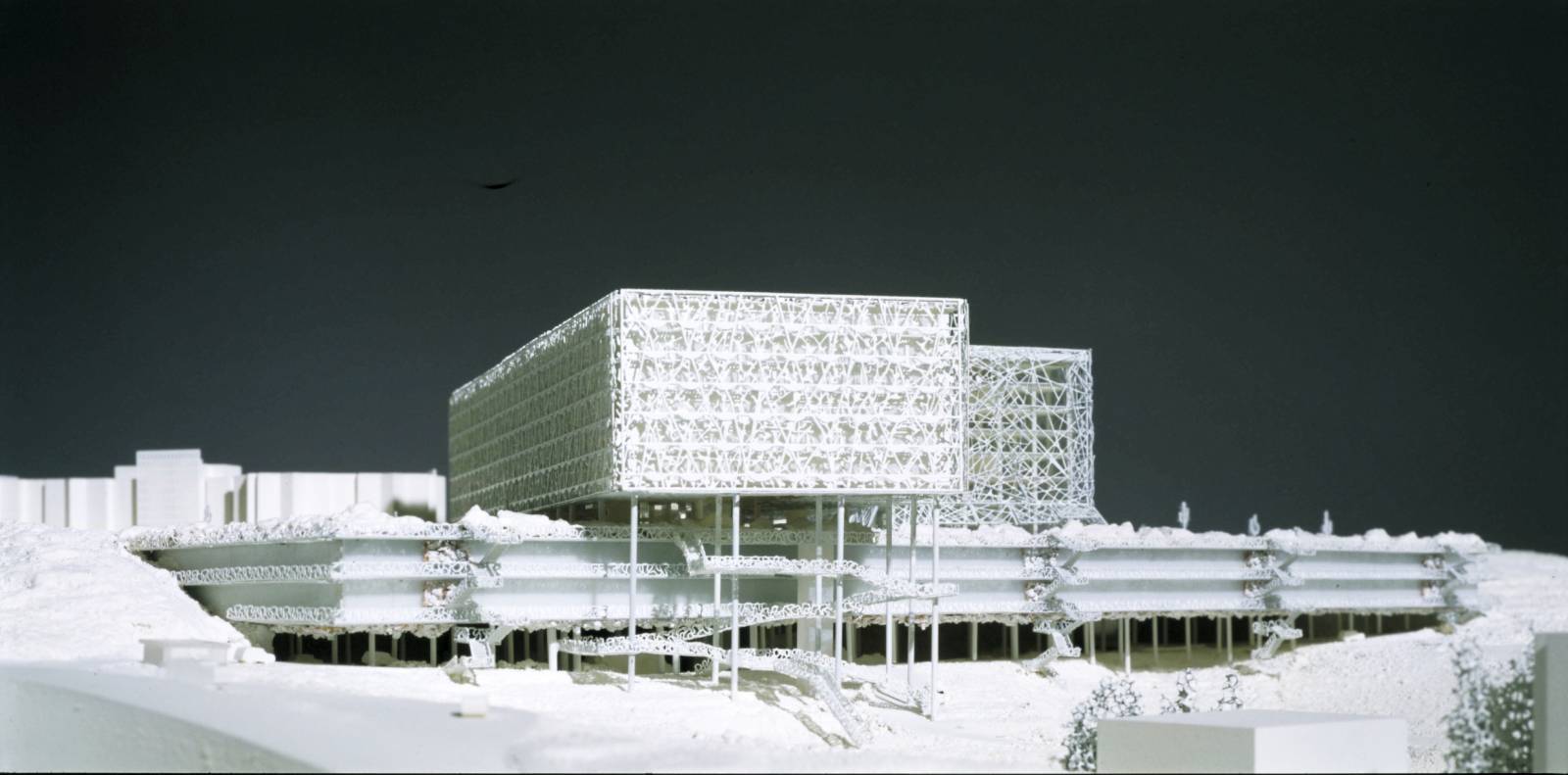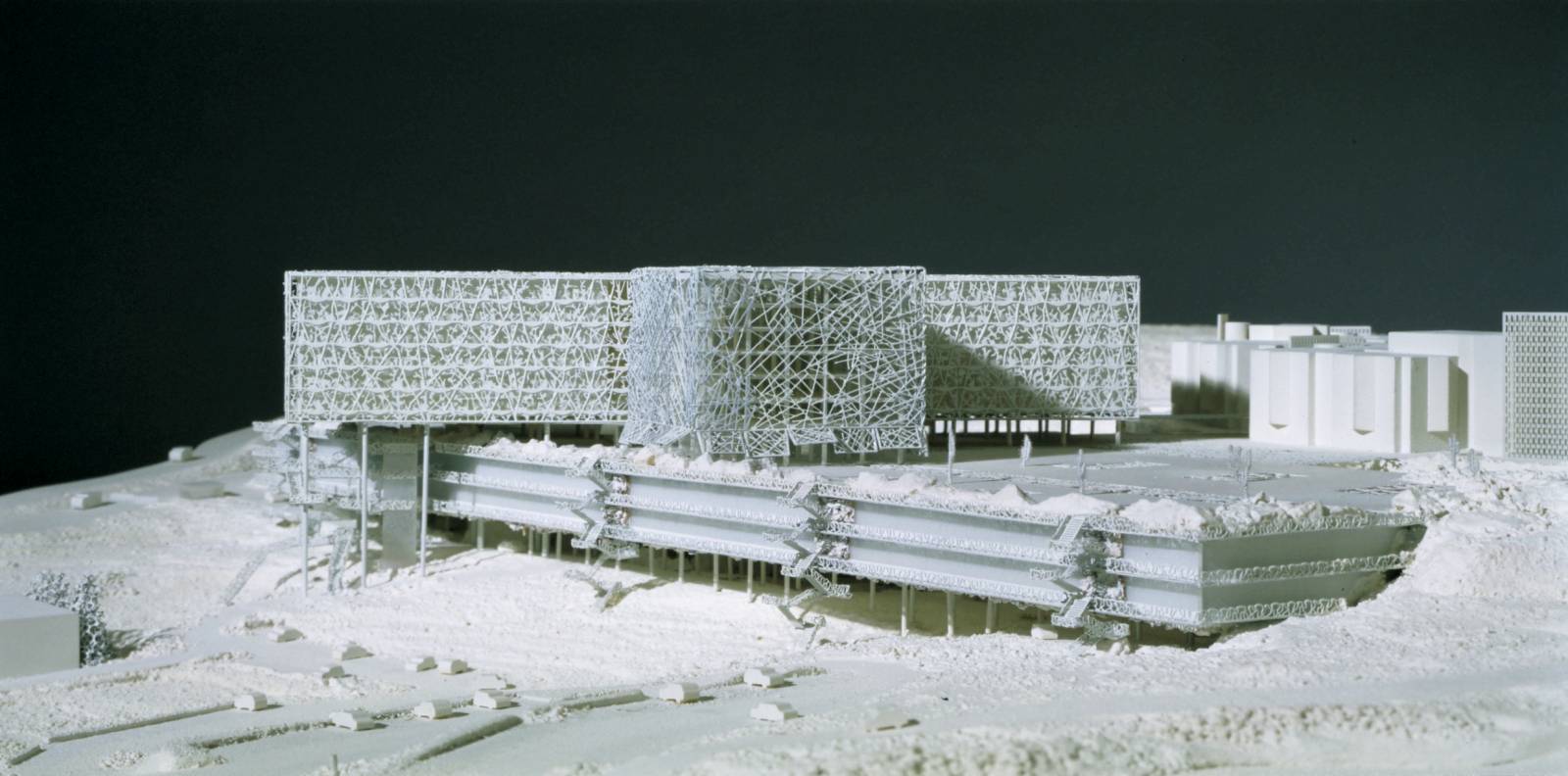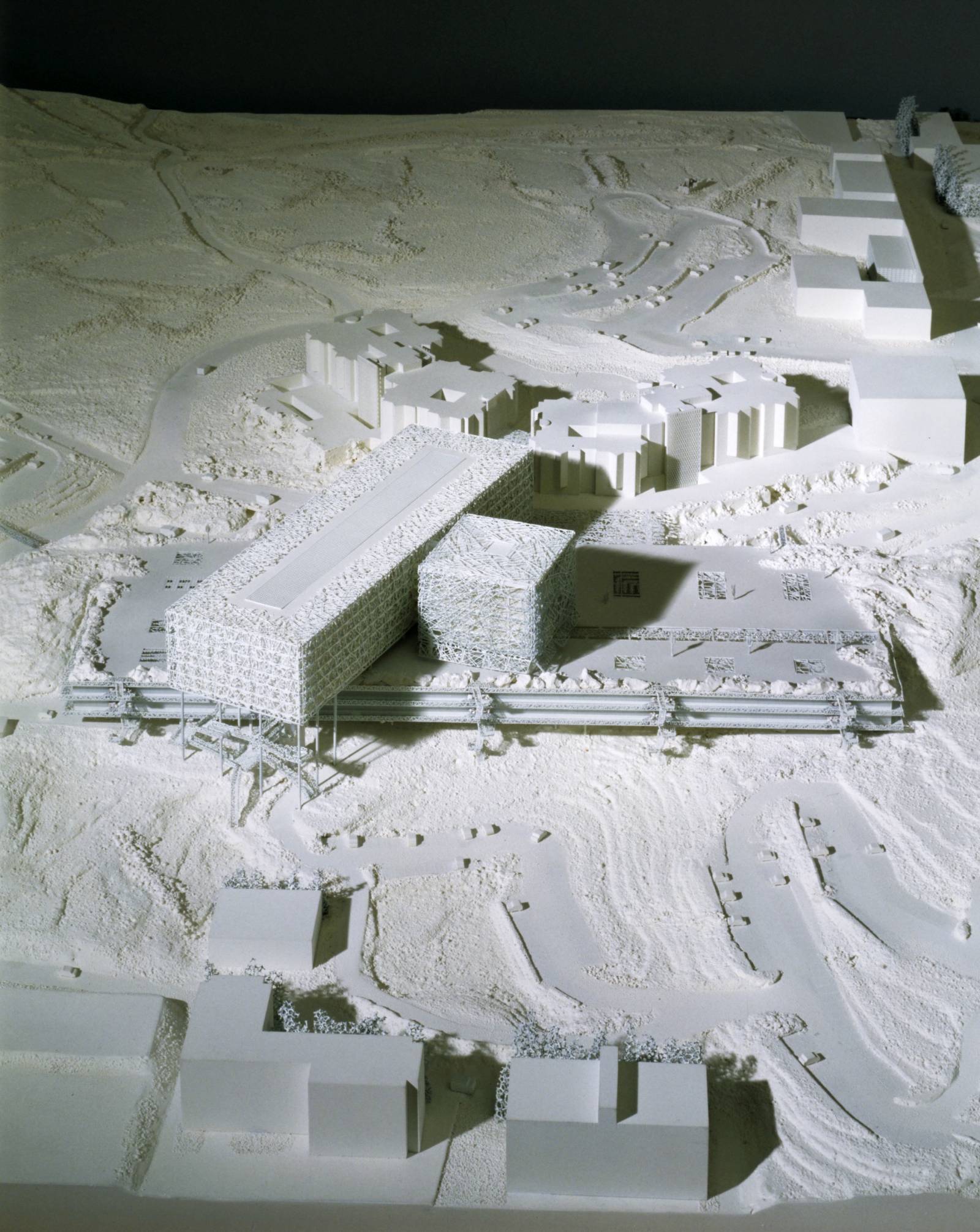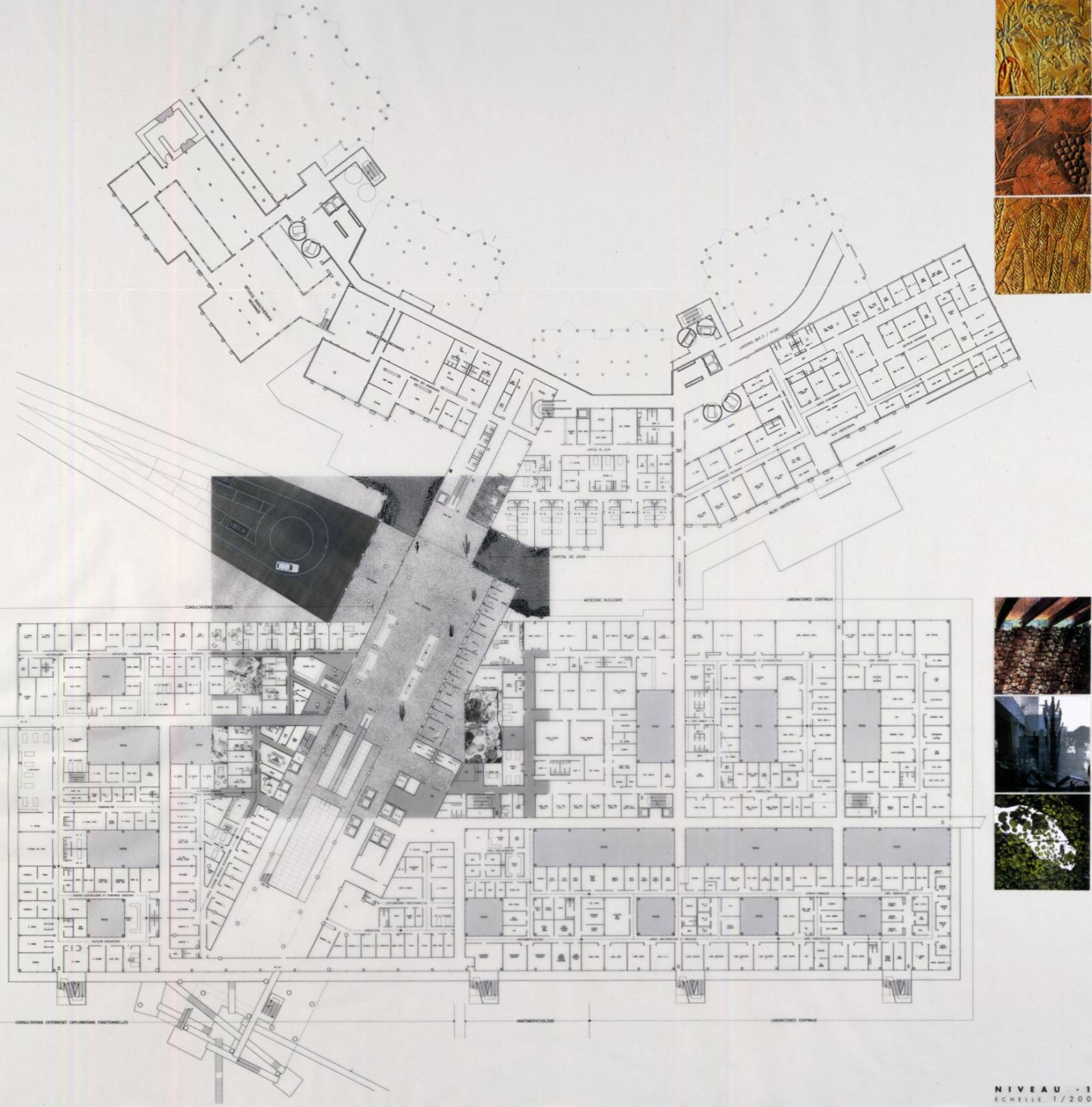- Previous project: Centre Hospitalier Universitaire Carémeau
- Next project: Campus de la Faculté de Jussieu – Le Porte-Avion
Carémeau Teaching Hospital
- Nîmes, France
Mediterranean Hospitality
A hospital is made for treating people. Effectively. Urgently and proficiently. Without wasting precious seconds that could cost lives. Within a logic that is all about function and the most appropriate investment.
This preliminary explains why function has dictated the layout and technical choices here. If the commissioning authority has any doubts about their soundness, these choices can easily be modified since the proposed architecture is not essentially dependent on layout or proportions. Our aim is to achieve the most satisfactory proposal in terms of the main criteria of functionality, no matter what the initial difficulties we may experience in getting there.
So the esthetic means managing the obligation.
It also means nature, the essence of any Mediterranean landscape architecture. A hospital welcomes. Patients and visitors. Onto a site first and then into a building.
A site, in the present case, translates to a hilly stretch of gravelly scree, some scrubland and the fact of being part of an architectural community that has been demanding for millenia.
The first proposal, then, is to create a new landscape by drawing on the first. This is a difficult job since we need to create a number of open-air carparks…
- I propose to extend the drystone and split-stone walls, of which there are plenty all over the site, to form new carparks.
- I propose to plant trees right in front of the neighbouring buildings that impinge on us, since a green screen is better than an ‘architectural’ one.
- I propose to accentuate and enhance the existing building by creating trellised-screen walls and by placing it in such a way as to continue the ‘citadel-wall’ effect by extending the horizontal brick-coloured wall into the landscape.
- I propose to create a wide terrace accessible to patients and visitors, bordered by rocks, punctuated by cacti and modulated by themed gates on patios that are needed to bring light into the medical areas.
The main built block will be set on the most functional spot to the south, below the existing hospital. It will be mostly brick-coloured like the preexisting structure. This brick block will be anchored in the soil, in the rock and stones. It combines quintessential Mediterranean themes and materials. The architecture seeks to look natural and to provide an ideal climate. It also aims at wellbeing and tranquility, hopefully demonstrating that hospital architecture needn’t be doomed to exclusively financial and functional exercises.
We are in Nîmes. In the Mediterranean Basin. Themes linked to being anchored in the soil, to designing the new site in terms of the relief and topography, the streaming of light into the building through patios or protected windows – these are all so many opportunities for anchoring the building in its geographical area and in its city. The eternal themes of sun and water, of vegetation, of the scrubland of the south of France, of figs and olives and wheat… merging possibly with the equally symbolic themes of bulls, the Minotaur, and even the She-wolf of Rome, as well as snakes, palm trees, crocodiles, etc. – these will all dealt with by simple means, vegetal or mineral, the most explicit being ‘wrought iron’ artworks.
The hospital thus proposed is an integral part of the landscape based on function, its form can evolve without profoundly changing the writing or meaning of an organic architecture that has tied down, wrapped up, refined and discriminated between the obligatory contingencies of a precise system. Precision is used as an internal vocabulary, with smooth welded brick-coloured floors, chrome, white paint, materials chosen chromatically, etc., within a well-managed contrast to a more expressive exterior.
The symbolic dimension linked to the essence of the place gives this architecture an optimistic human dimension, as well as a visual quality that would be hard to achieve in a more conventional style.
Nîmes Hospital has Mediterranean hospitality. It aims to be an integral part of the architectural heritage of the city, to avoid the fate of the usual boring architecture conditioned by the ‘hospital’ program, and the facility of the stereotypical response: architecture really can exist in a hospital setting. Gaudi and Scarpa, men of the Mediterranean, demanding men and demanding architects, would have made a stronger case than I have.
Jean Nouvel







